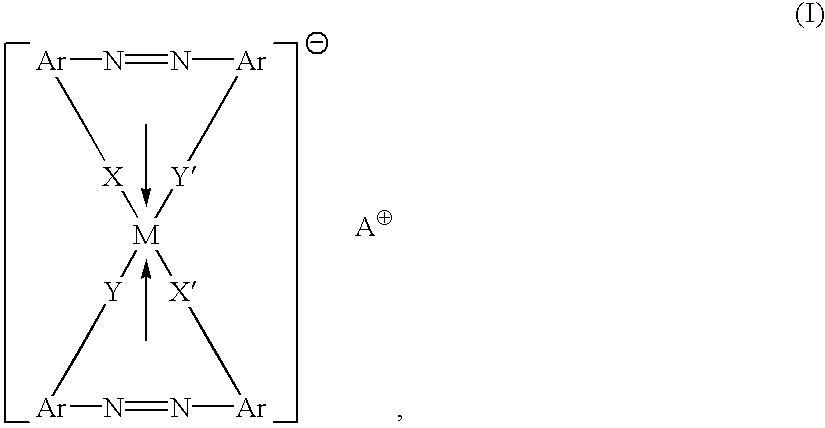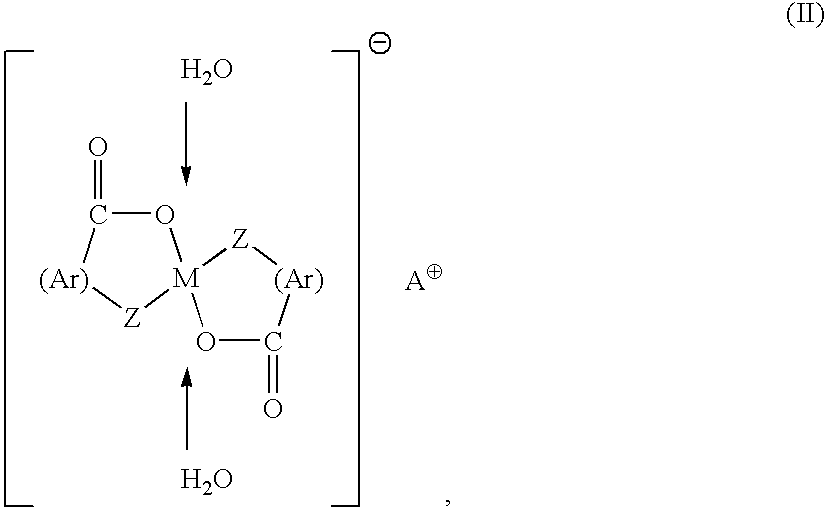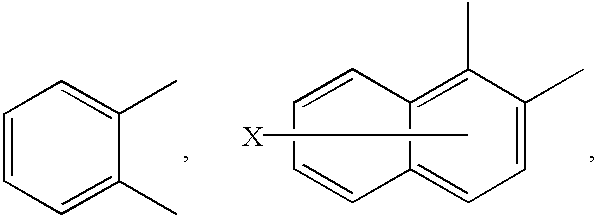A developing method using an insulating magnetic toner involves an unstable factor associated with the use of such an insulating magnetic toner.
These difficulties are presumably caused by the presence at the magnetic toner particle surfaces of fine particles of magnetic material having a lower resistivity than the resin constituting the toner.
The toner chargeability also greatly affects the developing performance and transferability, thus also deeply affecting the
resultant image quality.
Consequently, a toner is required to exhibit higher performances, failure of which makes impossible the realization of an excellent image forming apparatus.
This problem is encountered also in the case of storing the waste toner in a vessel or a
recovery box disposed in the apparatus or in a
system including a waste toner
recovery unit integral with the photosensitive member.
However, a toner produced through the pulverization process is caused to have a generally broad
particle size distribution, so that it is difficult to uniformly increase the
transfer efficiency of all the toner particles, thus leaving a room for further improvement.
However, these toner production methods require a large production apparatus, and the
resultant sphere-like toner particles are liable to cause a problem of cleaning failure because of their spherical shape.
However, the thus-improved
transfer efficiency is still insufficient in an image forming system for achieving versatile functions, higher speed, higher image qualities and
machine size reduction for image forming machines inclusive of
copying machines, printers and
facsimile apparatus.
However, as the powdery material is pulverized by the impacting force caused by the impingement of the
powder ejected together with a high-pressure gas onto the impingement member, the
resultant toner particles are made indefinitely shaped and angular, and the
release agent and magnetic material
powder are liable to be isolated from the toner particles.
Further, in order to produce a
small particle size toner by using the above-mentioned impingement-type pneumatic
pulverizer, a large amount of air is required, thus increasing the
electric power consumption which results in an increase in production
energy cost.
The respective
powder streams are liable to flow separately and be ejected in different courses depending on positions of introduction into the classifying chamber, and further the coarse powder
stream is liable to disturb the course of flying of
fine powder, thus posing a limit of improved classification accuracy.
Further, according to the conventional system, even if a toner product having an accurate
particle size distribution can be attained, the steps therein are liable to be complicated to result in a lower classification efficiency, a lower production yield and a higher production cost.
As a result, in order to comply with a higher process speed, the lowering in low-temperature fixability and restriction on developing performance of a magnetic toner become severer than ever.
An
absorbance at a
wavelength of 340 nm larger than 2.5 means the
exposure of large amount of magnetic
iron oxide at toner particle surfaces, and the exposed magnetic iron
oxide is liable to drop off the toner particles to obstruct the cleaning performance of a cleaning member for toner cleaning.
As a result, the toner is liable to attach to the charging member in a low temperature / low
humidity environment, and is liable to be pressed by the charging member and attached onto the photosensitive drum surface in a high temperature /
high humidity environment.
The toner attached to the charging member and the photosensitive drum surface makes unstable the
charge control, thus being liable to adversely affect the developing performances.
Further, the toner charge is liable to be leaked via the exposed magnetic iron
oxide, to result in a lower toner charge.
A toner having such a lower charge results in increased
fog and a lower transferability which further promotes the charging failure, thus adversely affecting the developing performances.
Further, in such a toner, the dispersion of magnetic iron
oxide in the toner particles is ununiform, thus resulting in an ununiform chargeability which beads to a problem in
image density increase at an initial stage of
image formation in low temperature / low
humidity environment.
Such a toner containing little surface-exposed magnetic iron oxide exhibits a high chargeability but is liable to be excessively charged in continuous
image formation on a large number of sheets by a high-speed
machine, particularly in a low temperature / low
humidity environment, thus causing a lowering in
image density.
Such a toner is also liable to form a denser toner layer to result in lower image qualities, such as a lower dot reproducibility, trailing of images and thickening of line widths.
However, an error introduced by the convenient calculation is very small and substantially negligible from the value obtained by strictly applying above-mentioned equations.
As a result of the comparison, it has been confirmed that the measurement by "FPIA-1000" tends to provide a higher circularity level due to inability of accurately capturing contours of relatively
small particles.
Further, because of an increased contact area with the photosensitive member, the attachment force of the toner particles onto the photosensitive member is increased to result in a difficulty in obtaining a sufficient transferability.
Further, if the number-basis percentage Y (%) of particles having Ci.gtoreq.0.950 within particles of 3 .mu.m or larger fails to satisfy the above-mentioned relationship according to the formula (2), i.e., caused to fall in a case of Y
A toner having D4>12 .mu.m is liable to comprise angular toner particles, so that it becomes difficult to attain desired circularity level and circularity distribution.
A toner having D4<4 .mu.m is liable to have a too spherical particle shape or excessive coverage of magnetic iron oxide at the surface due to excessive heat-supply, so that it becomes difficult to satisfy both the circularity distribution and the superficial amount of the magnetic iron oxide, and it becomes difficult to suppress the occurrence of
fine powder and ultra-
fine powder.
Similarly, a toner containing more than 40% by number of particles having particle sizes of at most 4.0 .mu.m is liable to have a too spherical particle shape or excessive coverage of magnetic iron oxide at the surface due to excessive
heat supply, so that it becomes difficult to satisfy both the circularity distribution and the amount of magnetic iron oxide at the surface.
A toner containing more than 25% by volume of particles having particle sizes of at least 10.1 .mu.m is liable to comprise angular toner particles, so that it becomes difficult to attain the desired circularity level and distribution.
If the binder resin does not have an
acid value in the above-described range, the dispersion of toner ingredients, particularly magnetic iron oxide particles, within the binder resin in the step of melt-kneading is liable to be inferior, so that it becomes difficult to control the degree of
exposure of magnetic iron oxide at the toner particle surfaces during the pulverization and surface-treatment steps.
Further, if the
acid value of the binder resin is below 1 mgKOH / g, the resultant toner particles are liable to have a lower chargeability, thus providing a toner with lower developing performance and stability in continuous
image formation.
On the other hand, above 100 mgKOH / g, the binder is liable to be excessively
moisture-absorptive, to provide a toner resulting in a lower
image density and increased
fog.
If Tg is below 45.degree. C., the toner is liable to be deteriorated in a high temperature environment and cause offset in the fixing step.
Below 65.degree. C., the anti-blocking property of the toner is lowered, and above 160.degree. C., it is difficult to attain the anti-offset effect.
Further, the resultant toner particles are made indefinitely and angularly shaped, so that the magnetic iron oxide is liable to be excessively exposed at the surface of the toner particles.
A temperature exceeding 0.degree. C. in the
processing chamber is undesirable for the above reason.
A
temperature difference .
DELTA.T of below 30.degree. C. suggests a possibility of short pass of the powdery feed without effective pulverization thereof, thus being undesirable in view of the toner performances.
On the other hand, .
DELTA.T>80.degree. C. suggests a possibility of the overpulverization, resulting in the liberation of magnetic iron oxide particles from and surface deterioration due to heat of the toner particles and melt-sticking of toner particles onto the apparatus wall and thus adversely affecting the toner productivity.
A circumferential speed below 80 m / s of the rotor 314 is liable to cause a short pass without pulverization of the feed, thus resulting in inferior toner performances.
A circumferential speed exceeding 180 m / s of the rotor invites an overload of the apparatus and is liable to cause overpulverization resulting in the isolation of magnetic iron oxide particles.
Further, the overpulverization is also liable to result in surface deterioration of toner particles due to heat, particularly the liberation of magnetic iron oxide particles at the toner particle surfaces, and also melt-sticking of the toner particles onto the apparatus wall, thus adversely affecting the toner productivity.
A gap exceeding 10.0 mm between the rotor 314 and the
stator 310 is liable to cause a short pass without pulverization of the powdery feed, thus adversely affecting the toner performance.
A gap smaller than 0.5 mm invites an overload of the apparatus and is liable to cause overpulverization resulting in the isolation of magnetic iron oxide particles.
Further, the overpulverization is also liable to result in surface deterioration of toner particles due to heat, particularly the liberation of magnetic iron oxide particles at the toner particle surfaces, and also melt-sticking of the toner particles onto the apparatus wall, thus adversely affecting the toner productivity.
If Ra>10.0 .mu.m, Ry>60.0 .mu.m or Rz>40.0 .mu.m, overpulverization is liable to occur at the time of pulverization, and the overpulverization is liable to result in surface deterioration of toner particles due to heat, particularly the isolation of magnetic iron oxide particles at the toner particle surfaces, and also melt-sticking of toner particles onto the apparatus wall, thus adversely affecting the toner productivity.
If the air
stream temperature for the surface-treatment is above-specified temperature, the toner particle surfaces are liable to be denaturated, e.g., exudation and re-aggregation at the toner particle surfaces of the
wax dispersed in the toner particles due to accumulation of frictional and
impact heat caused during the surface-treatment.
 Login to View More
Login to View More  Login to View More
Login to View More 


